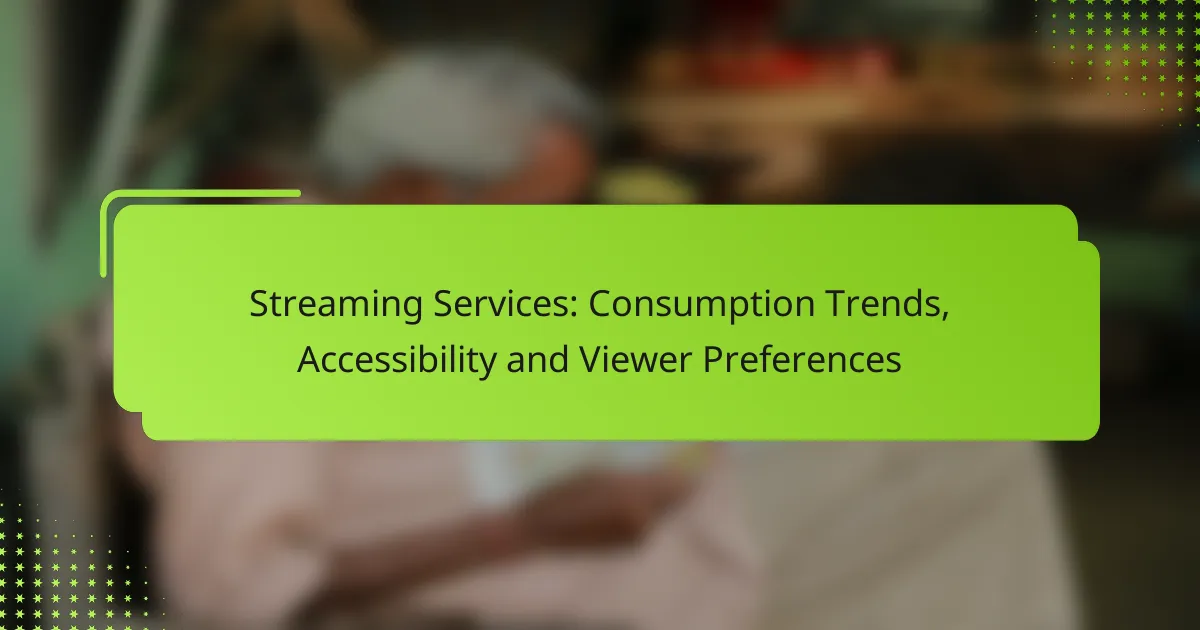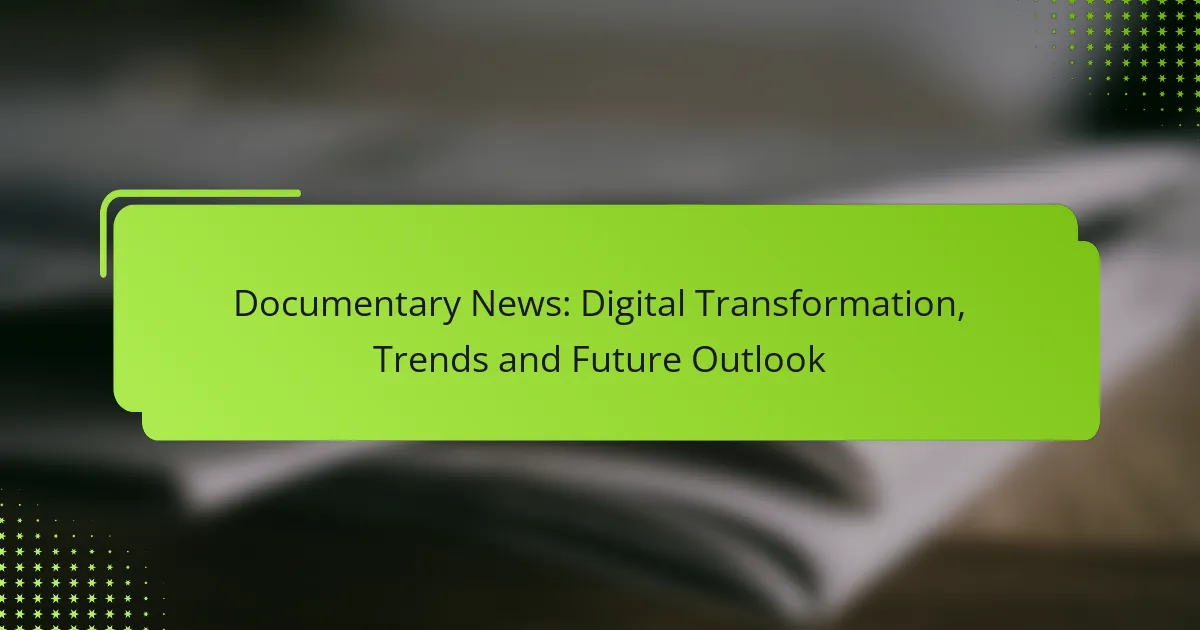In the evolving landscape of filmmaking, innovative techniques are transforming how stories are crafted and experienced. With advancements such as virtual reality and interactive storytelling, filmmakers are not only enhancing visual quality but also fostering deeper audience engagement. As trends shift towards streaming platforms and diverse narratives, the industry is adapting to meet the demands of modern viewers.

What are the latest filmmaking techniques enhancing audience engagement?
The latest filmmaking techniques focus on creating immersive experiences that captivate audiences and foster interaction. Innovations such as virtual reality, interactive storytelling, and augmented reality are redefining how stories are told and experienced.
Virtual reality experiences
Virtual reality (VR) immerses viewers in a three-dimensional environment, allowing them to interact with the narrative in real-time. This technique enhances audience engagement by placing them directly within the story, making them active participants rather than passive observers.
Filmmakers can create VR experiences using platforms like Oculus Rift or HTC Vive, which provide tools for developing engaging content. Considerations include the need for high-quality graphics and sound to ensure a believable environment, as well as the potential for motion sickness in some users.
Interactive storytelling
Interactive storytelling allows audiences to influence the direction of the narrative through choices they make during the viewing experience. This technique can significantly boost engagement by giving viewers a sense of agency and investment in the story.
Platforms like Netflix have experimented with interactive films, such as “Black Mirror: Bandersnatch,” where viewers select plot points. Filmmakers should focus on creating branching narratives that feel cohesive and meaningful, ensuring that each choice leads to a satisfying outcome.
Augmented reality integration
Augmented reality (AR) overlays digital content onto the real world, enhancing the viewing experience by providing additional context or interactive elements. This technique can engage audiences by blending the physical and digital realms, making the story more relatable and immersive.
Examples of AR in filmmaking include promotional apps that allow users to interact with characters or scenes from a film. Filmmakers should consider the accessibility of AR technology and the need for a user-friendly interface to maximize audience participation.
Real-time audience feedback
Real-time audience feedback involves collecting viewer reactions during screenings to adapt the narrative or marketing strategies accordingly. This technique can enhance engagement by allowing filmmakers to gauge emotional responses and adjust content to better resonate with audiences.
Tools like social media polls or audience response systems can facilitate this feedback loop. Filmmakers should be prepared to analyze feedback effectively and implement changes without compromising the artistic vision of the project.
360-degree video production
360-degree video production captures a complete view of a scene, allowing viewers to explore their surroundings while watching a film. This technique enhances engagement by providing a more immersive experience, as audiences can control their perspective and focus on different elements of the story.
Filmmakers can use specialized cameras to create 360-degree content, but they must consider the narrative flow and how to guide viewers’ attention effectively. Ensuring high-quality visuals and sound is crucial for maintaining immersion and viewer interest.

How are filmmakers using technology to innovate?
Filmmakers are increasingly leveraging technology to innovate their storytelling and production processes. By integrating advanced tools and techniques, they enhance visual quality, streamline workflows, and engage audiences more effectively.
AI-driven editing tools
AI-driven editing tools are transforming the post-production landscape by automating repetitive tasks and enhancing creative decisions. These tools can analyze footage, suggest cuts, and even generate rough edits, significantly reducing editing time from weeks to days.
Popular platforms like Adobe Premiere Pro and DaVinci Resolve now incorporate AI features that help identify the best takes or suggest transitions based on the content’s emotional tone. Filmmakers should consider the learning curve and potential reliance on technology when integrating these tools into their workflow.
Drone cinematography
Drone cinematography allows filmmakers to capture stunning aerial shots that were once only possible with expensive helicopter rentals. Drones provide a cost-effective solution for obtaining dynamic perspectives, enhancing the visual storytelling of films.
When using drones, filmmakers must adhere to local regulations, such as maintaining a certain distance from people and structures. The range of drone prices varies widely, from a few hundred to several thousand dollars, depending on the features and camera quality.
High dynamic range imaging
High dynamic range (HDR) imaging enhances the contrast and color range in film, providing a more lifelike viewing experience. This technique allows filmmakers to capture details in both bright and dark areas, making scenes more visually engaging.
To utilize HDR effectively, filmmakers should ensure their cameras support HDR formats and that their post-production workflow accommodates HDR editing. Additionally, HDR content is best experienced on compatible displays, which are increasingly available in consumer markets.
Remote collaboration platforms
Remote collaboration platforms are essential for filmmakers working with distributed teams, especially in the wake of recent global shifts towards remote work. These tools facilitate real-time communication and file sharing, enabling seamless collaboration regardless of location.
Popular platforms like Frame.io and Slack allow teams to review footage, provide feedback, and manage projects efficiently. Filmmakers should prioritize tools that offer robust security features and user-friendly interfaces to enhance productivity and protect their intellectual property.

What trends are shaping the future of filmmaking?
Several key trends are currently influencing the future of filmmaking, including the rise of streaming platforms, a focus on diversity in storytelling, the popularity of short-form content, and a resurgence in documentary filmmaking. These trends reflect changing audience preferences and technological advancements that filmmakers must adapt to in order to remain relevant.
Rise of streaming platforms
The rise of streaming platforms has transformed how films are distributed and consumed. Services like Netflix, Amazon Prime, and Disney+ have created new opportunities for filmmakers to reach global audiences without traditional theatrical releases.
Filmmakers should consider the unique demands of streaming audiences, such as the importance of engaging content that can be consumed in shorter viewing sessions. This shift often requires a rethinking of narrative structures and pacing to maintain viewer interest.
Focus on diversity in storytelling
There is an increasing emphasis on diversity in storytelling, with filmmakers striving to represent a wider range of voices and experiences. This trend not only enriches the narrative landscape but also resonates with audiences who seek authenticity and relatability in the stories they watch.
To effectively incorporate diverse perspectives, filmmakers should engage with underrepresented communities during the development process. This can involve collaboration with diverse writers, directors, and actors to ensure that stories are told with nuance and respect.
Short-form content popularity
Short-form content is gaining traction as audiences increasingly favor quick, digestible entertainment. Platforms like TikTok and Instagram have popularized formats that often last only a few minutes, prompting filmmakers to experiment with brevity and impact.
Filmmakers can leverage this trend by creating concise narratives that deliver strong emotional or comedic punches. Understanding the platform-specific audience is crucial; for instance, content that thrives on TikTok may differ significantly from what works on YouTube.
Documentary filmmaking resurgence
Documentary filmmaking is experiencing a resurgence, driven by audience interest in real stories and factual content. With the rise of streaming services, documentaries are more accessible than ever, appealing to viewers looking for informative and engaging narratives.
Filmmakers should focus on compelling storytelling techniques to capture and retain audience attention. This includes using high-quality visuals and sound, as well as innovative editing styles that enhance the storytelling experience. Engaging with current events and social issues can also help documentaries resonate more deeply with viewers.

What criteria should filmmakers consider when choosing techniques?
Filmmakers should consider audience engagement, budget limitations, and distribution channels when selecting techniques. These factors directly influence the effectiveness of the chosen methods and the overall success of the film.
Target audience preferences
Understanding target audience preferences is crucial for filmmakers. Techniques that resonate with viewers can enhance emotional connection and engagement. For instance, younger audiences may prefer fast-paced editing and vibrant visuals, while older viewers might appreciate slower narratives and character-driven stories.
Filmmakers can gather insights through surveys, social media interactions, and analyzing trends in popular films. Tailoring techniques to audience preferences can significantly impact box office performance and critical reception.
Budget constraints
Budget constraints play a significant role in determining which filmmaking techniques are feasible. High-quality special effects, elaborate sets, and top-tier talent can quickly escalate costs. Filmmakers should prioritize techniques that align with their budget while still achieving their creative vision.
For example, using practical effects instead of CGI can be more cost-effective and often yields a more authentic feel. It’s essential to balance artistic ambition with financial realities to avoid overspending and compromising the project’s viability.
Distribution channels
The choice of distribution channels can influence the techniques filmmakers use. Different platforms, such as streaming services, theaters, or television, may have varying requirements and audience expectations. For instance, films intended for theatrical release might focus on high production values and cinematic techniques, while those for streaming could prioritize storytelling and pacing.
Filmmakers should research the characteristics of their chosen distribution channels to ensure their techniques align with the platform’s audience and technical standards. Understanding these dynamics can help maximize reach and viewer engagement.

How do audience engagement strategies impact box office success?
Audience engagement strategies significantly influence box office success by fostering a connection between filmmakers and viewers. Effective engagement can drive ticket sales, enhance word-of-mouth promotion, and create a loyal fan base.
Social media marketing
Social media marketing is a vital tool for engaging audiences and promoting films. Platforms like Instagram, Twitter, and TikTok allow filmmakers to share trailers, behind-the-scenes content, and interactive posts that resonate with potential viewers.
To maximize impact, studios should focus on creating shareable content and leveraging influencers to reach wider audiences. Campaigns that encourage user-generated content can also enhance engagement and create a sense of community around the film.
Fan-driven content creation
Fan-driven content creation involves encouraging fans to produce their own material related to a film, such as fan art, videos, or stories. This strategy not only boosts engagement but also fosters a deeper emotional connection to the film.
Filmmakers can facilitate this by hosting contests or providing platforms for fans to showcase their work. Recognizing and sharing fan creations can further enhance loyalty and drive interest, ultimately contributing to box office success.



